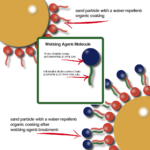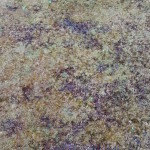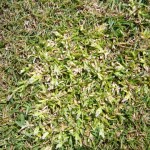The rink heads on the bowling green are subject to higher levels of wear and tear than any other playable part of the green. The concentration of foot traffic on these areas causes severe compaction of the soil resulting in poor growth characteristics and in many cases invasion by annual meadow grass. Due to the …
Search for heads - 32 results found
Tackling Hydrophobic Soil and LDP: Some key research findings

The management of bowling greens often presents complex challenges, one of the most prevalent being the occurrence of localised dry patch (LDP) due to hydrophobic soil conditions. Addressing this issue effectively is crucial for the health and performance of your green and wetting agents have emerged as a key tool in this endeavour.
However, concerns have been raised about the potential toxicity of commonly used chemical wetting agents, leading to a call for safer, more environmentally friendly alternatives.
Understanding Wetting Agents and their Role in Combatting Localised Dry Patch (LDP)

Some wetting agents are made from harsh chemicals that can be harmful to the environment and potentially toxic to humans and animals. However, wetting agents made from biodegradable and environmentally friendly ingredients are available. These products are designed to be safe for use around people, pets, and wildlife, and they break down naturally in the soil over time, leaving no harmful residues behind.
Breaking into the Circle of Decline this Autumn

Yes, I'm thinking about Autumn already. Why?, It's all to do with the devastating effect of Localised Dry Patch on many greens this year. I've ever had so many people get in touch. It looks like the more regular occurrence of extreme heat and long dry spells is demonstrating the problem of excessively sandy rootzones, much better than I could ever hope to explain...
Sand Top Dressing – Friend or Foe? Soil Texture 5.

Sand Top Dressing - that ubiquitous and apparently simple greenkeeping operation indulged in by most clubs annually is actually a much more complex operation than most give it credit for. In this article John Quinn explains the mechanics of top-dressing. He explains what it can and can't do and why you must understand some soil science before top-dressing is considered.
Bowls Green Soil Texture part 3
In the first part of this series we discovered that the ideal bowling green soil (or rootzone) will be 50% space, 5% organic matter, with the remainder (45%) being made up of mineral matter, namely Sand, Silt and Clay. These are the 3 universal mineral components of soil. Part 1 finished with an explanation of the soil fractions, 5 of which were sands of varying sizes.
In part 2 we found out a little bit more about sand and it's behaviour as a drainage medium and we discovered a little more about how soils are formed. We finished by looking at the importance of sand particle shape and size in bowling green rootzones.
How to painlessly transform greens from Poa annua to bent/fescue

Transitioning your green from Poa annua to bent/fescue is not only critical to achieving a Performance Bowling Green, but is actually a realistic goal. The spongy, soft turf associated with annual meadow grass is less than ideal for bowls. Common wisdom says that this can't be done without major disruption and that even after it is achieved it wont last. This article explains in detail how to undertake the transition of your green from Poa annua to bent/fescue turf and dispels the myths about stressing Poa. This is the way to change your green permanently and without fuss. It will also save your club money on maintenance, so what's not to like?
Humus ReCharge
Fix your bowling green step 3

In parts 1 and 2 of this series on how to fix your bowling green, we discussed the process and importance of taking regular soil profile samples and discovered what the soil sample can actually tell us about the condition of the green. In part 3 John links this to demonstrate why each of the visual signals from the soil sample point clearly to one or more of the multitude of issues we experience on poorly performing greens. From disease outbreaks to skinning of heads and bad runs on rinks, the humble soil profile sample can tell us a lot about where we're going wrong and point to the answers that will help us create a performance bowling green in the near future.
Ecology 3. Competition and Adaptation

Some of the key factors that benefit or hinder a species in its quest for dominance are described as Environmental Stresses. It is these stresses that drive the evolutionary process and as such can be used by the bowling greenkeeper to create conditions that are more suitable for the desired species than for others. There are a number of ways for greenkeepers to manipulate the environment artificially, or indeed to take advantage of naturally occurring stresses, in order to alter the balance of the bowling green ecosystem in favour of the desired grass species. An understanding of Competition and Adaptation in eco systems will help you a great deal in developing a sound greenkeeping program for fine, perennial grasses.

